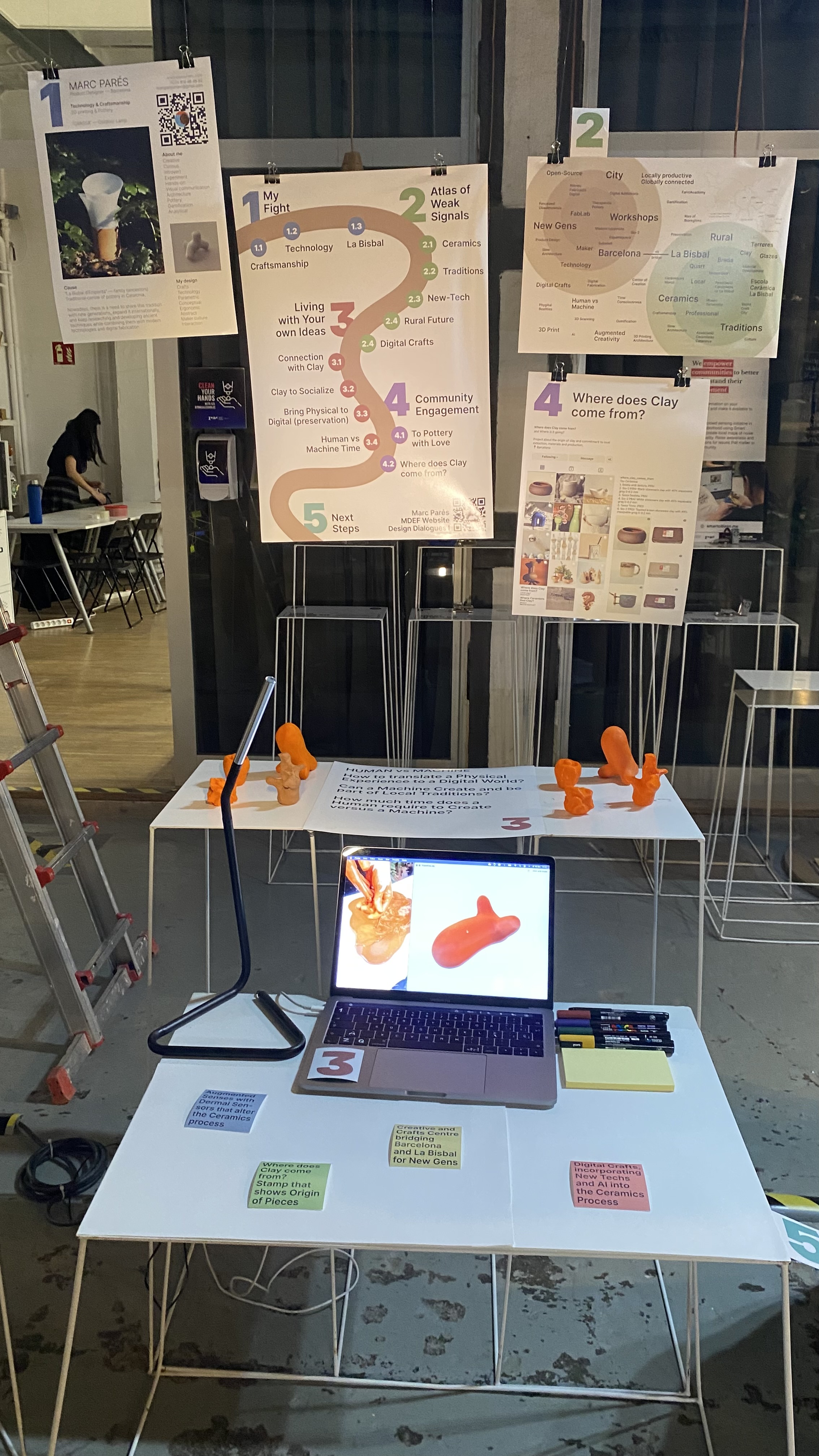Daily Clay Interaction¶
HUMAN vs MACHINE? How to translate a Physical Experience to a Digital World? Can a Machine Create and be part of Local Traditions? How much time does a Human require to Create versus a Machine?
Activity about how the interaction with clay can help a group of people interact between them.
I gave a bunch of clay and plasticine to a group of friends while we were taking a drink in a bar. I asked them to interact with the material and do whatever they wanted. It was interesting how each one did something different, some wanted to replicate an object in their mind, others created something original, but the most interesting one was about playing with clay and enjoying the process without searching for a result.
After the bar experience, I recollected the final pieces of clay and 3D scanned them. Following the preservation concept, I wanted to digitalize them to be able to have a copy forever. It is also a means of sharing and replicating something.


Once I had the 3D models, I printed some of them with a FDM printer. I wanted to compare the objects to see what differences they had. The 3D-printed shapes had less detail because of the low resolution of 3D scanning, but you can still relate them perfectly to the original shape. Because with slicing, you can generate an infill pattern and change density, the 3D-printed shapes were lighter than the clay ones. Also, the layers of the 3D printer have a different texture, and the colour is similar but brighter.
One interesting thing I noticed from 3D printing the shapes is that the copies of plastic still have the ergonomic and tactile shapes that make your hand feel like the object was made by hands, even if it was made entirely by a machine.
I also wanted to compare the process of creation, as per a human and as per a 3D printer. The experience in the bar lasted about an hour and a half, and everyone generated lots of shapes and had a great time talking about the experience but also about external conversations. On the other hand, the 3D printer only creates what a human says, and will go directly to the final product, without paying attention to the process.
This made me think about how 3D scanning can make everyone generate a 3D model without having to invest a lot of time learning CAD software. Even kids can generate a digital file by only playing with their hands.

This activity was the first phase of a possible future intervention. This helped me see how a group of people reacts to an improvised activity and how self-improvisation can be a good option sometimes. Some ideas for possible future interventions could be:
-
3D printer that improvises and has a mentality? That creates what they want, that changes their mind (undecided). Controlled by AI?
-
3D printer with ceramic waste or clay powder from local extraction.
-
Workshop or exhibition with kids to generate 3D digital and physical.
-
Learning the boundaries of machine creations and art.